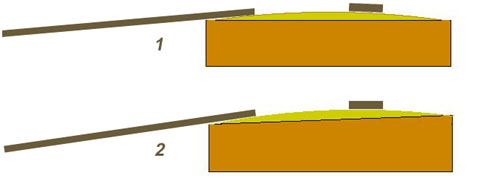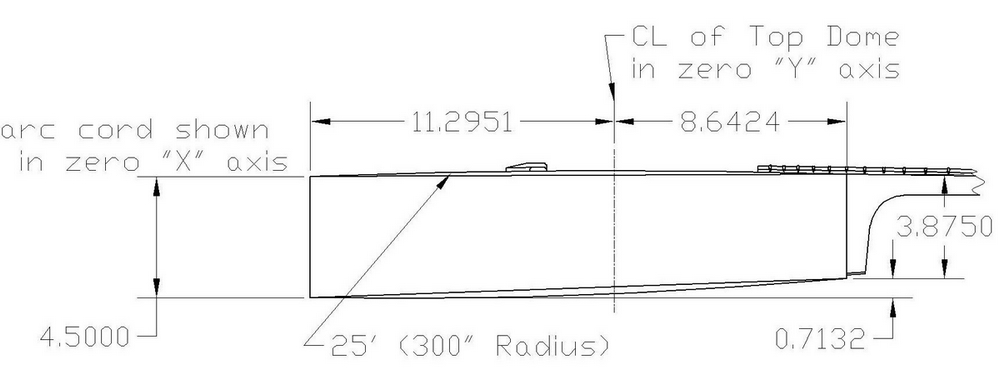You can move the effective "peak" of your dome by tapering the sides. In the first of two images that follow, the top is mounted to the side such as to make a 90 degree angle from a line from the head to the tail. This put the peak half way between the head and the tail. In the second image, the top is slightly tapered. This moves the peak further back towards the tail and also make for a larger neck set angle.
I try to make my guitars like the first image and let the dome determine the neck set angle. I flatten the upper bout so that the fretboard extension lays flat.





